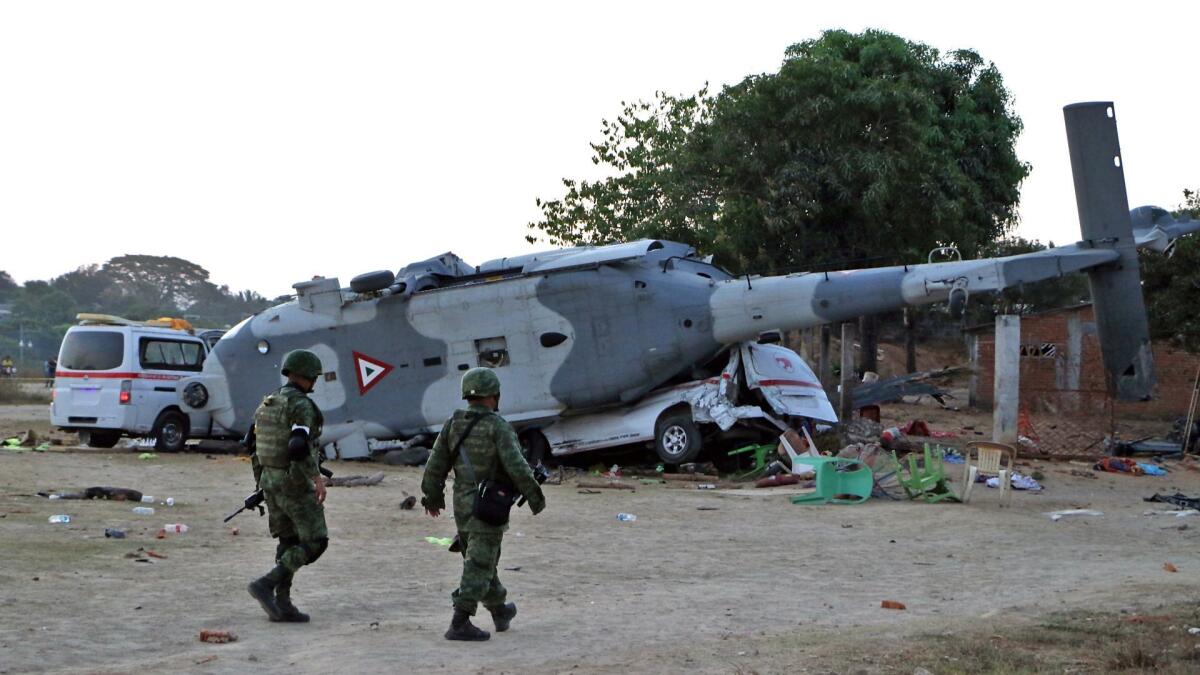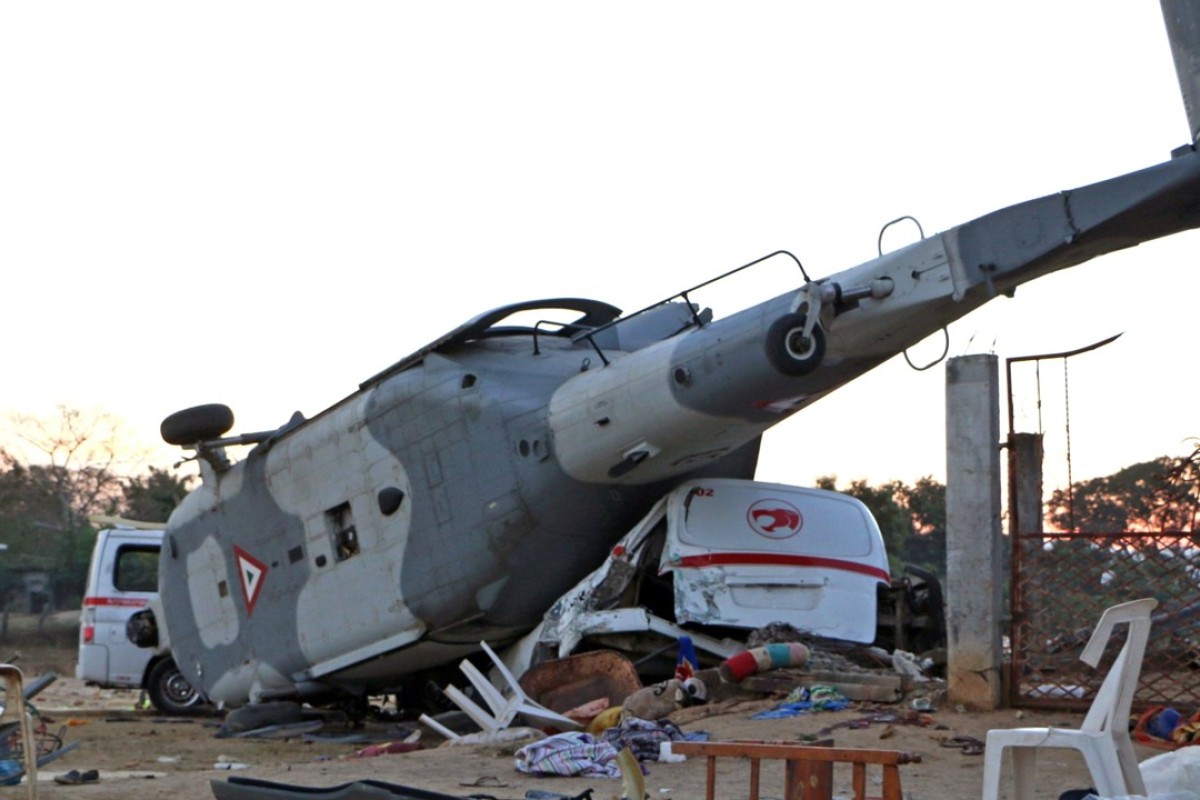Tragedy in Oaxaca: Military Helicopter Crash, 14 people lost their lives in Mexico
In a deeply tragic turn of events, what began as a mission to assess damage and provide aid following a powerful earthquake in southern Mexico ended with the loss of 14 civilian lives. On February 16, 2018, a military helicopter carrying high-ranking government officials crashed while attempting to land in the town of Santiago Jamiltepec, Oaxaca — an area severely affected by the quake.
The helicopter, a UH-60M Black Hawk operated by Mexico’s military, was transporting Interior Secretary Alfonso Navarrete Prida and Oaxaca Governor Alejandro Murat. Both officials were unharmed, as were others on board, suffering only minor injuries. However, those on the ground — many of whom had evacuated damaged homes to take refuge in open fields — were not as fortunate.
A Natural Disaster Followed by Human Tragedy
Earlier that day, a magnitude 7.2 earthquake had shaken southwestern Mexico, with its epicenter near the Pacific coast in Oaxaca. The quake caused buildings to sway and prompted evacuations across the region. Although structural damage was reported, early assessments suggested there were no initial fatalities from the earthquake itself.
Many residents, fearful of aftershocks, chose not to sleep indoors that night. Instead, they stayed in tents, vehicles, or out in the open. Among them were the 14 victims — including at least three children — who had gathered in a field on the outskirts of Jamiltepec when disaster struck a second time.

The Crash: What Happened?
As the military helicopter prepared to land, it descended toward a dark, dusty field filled with civilians. According to later reports, the pilot lost visibility due to a combination of darkness, loose debris, and improper landing conditions. The aircraft was hovering approximately 100 feet (30 meters) above the ground when it suddenly plummeted, crashing directly onto parked vehicles where families had gathered.
The impact was catastrophic. Eleven people died at the scene, while three more succumbed to their injuries shortly afterward. At least 15 to 21 additional people were injured, many of them seriously.
The helicopter rolled on its side upon hitting the ground. It was later confirmed that all military and government personnel aboard, including Secretary Navarrete and Governor Murat, survived with only minor injuries — a fact that added complexity to the public reaction following the event.

Government Response and Public Apology
Mexico’s Secretary of National Defense, General Salvador Cienfuegos Zepeda, arrived in Jamiltepec the following day. In a press statement, he offered a heartfelt apology on behalf of the military, stating:
“We came here to help, not to harm. This tragedy is something we deeply regret, and we accept full responsibility.”
Cienfuegos emphasized that the incident was the result of an operational misjudgment and promised comprehensive support for the victims’ families. This included military aid for rebuilding efforts, medical assistance for the injured, and long-term support for the affected community.
Interior Secretary Navarrete also spoke to reporters after the incident, stating:
“It is deeply regrettable what happened. We are alive, but it is painful to know that this accident cost lives — especially of people who had already endured so much.”
Investigation and Accountability
Following the crash, the Mexican government launched a full investigation into the incident. Initial findings suggested that pilot error, combined with unsuitable landing conditions and poor visibility, contributed to the crash.
Critics also questioned the decision to land a military helicopter in a dark, unlit field populated by civilians, particularly in a region recently struck by an earthquake. Some argued that standard aviation protocols had not been followed and that better coordination was needed to avoid such risks during disaster response missions.
A key issue identified in subsequent reports was the failure to secure a safe landing zone. Normally, military aircraft are required to land in clear, controlled areas — especially during humanitarian or emergency operations. In this case, urgency may have overruled caution.
Despite official apologies and compensation efforts, public frustration lingered, especially among those who lost family members. Some expressed their anger on social media and in interviews, stating that the victims had escaped the quake only to be killed by a human-caused tragedy.
Community Mourning and Rebuilding
The town of Jamiltepec entered a period of mourning after the incident. Vigils were held for the victims, and public memorials were created in the town center. Flowers, candles, and handwritten notes filled the crash site for weeks.
Local authorities, in partnership with the military and civil protection agencies, began reconstruction efforts in the weeks following the event. Temporary shelters, food provisions, and psychological support were provided to the survivors and affected families.
The federal government also allocated emergency funding to rebuild homes and infrastructure damaged by both the earthquake and the crash. In addition, medical support was extended to those injured in the helicopter accident, with hospitals in Oaxaca and nearby regions offering specialized care.
A Stark Reminder of Disaster Management Challenges
This tragic incident serves as a sobering reminder of the complexities involved in responding to natural disasters. While the intention of the officials aboard the helicopter was to assist and support affected communities, the lack of proper safety protocols ultimately resulted in further suffering.
It also highlights the need for improved coordination between military and civilian agencies in emergency situations. From establishing secure landing zones to ensuring crowd control, every detail matters when lives are at stake — especially in volatile post-disaster environments.
In the years since the incident, there has been a push in Mexico to revisit and revise emergency response procedures involving military support in civilian areas. Training, risk assessments, and clearer operational guidelines are now considered essential components of future disaster response planning.

Final Thoughts
The helicopter crash in Jamiltepec was an avoidable tragedy that added profound grief to an already devastated community. Fourteen lives — including children — were lost not to the earthquake, but to a chain of human decisions made in the name of aid.
As Mexico continues to face natural disasters and complex emergencies, this event stands as a painful lesson. It underscores the importance of responsible decision-making, transparency, and accountability from those in power, especially when the lives of civilians are at risk.
Sources
- 2018 Oaxaca Earthquake – Wikipedia
- 14 Dead After Helicopter Crashes While Surveying Earthquake Damage – Los Angeles Times
- Mexico Helicopter Crash: 14 Dead, Officials Unharmed – BBC News
- Mexico Apologizes After Helicopter Crash Kills Quake Survivors – Reuters
- 13 Killed as Helicopter Lands in Mexican Earthquake Zone – South China Morning Post

